 |
National Aeronautics and Space Administration Goddard Space Flight Center |
SEARCH NASA |

 MOLA MOLA |
MOLA has made observations during the summer 2001 near-global Martian dust storm. The measurements made by the instrument are affected by a dusty atmosphere in several ways. The outgoing laser signal is scattered by diffusly distributed dust in the atmosphere and the instrument may detect a decrease in returned pulse energy, or if the atmosphere is very dusty it may even fail to get returns. In addition, interactions with atmospheric dust will cause the transmitted pulse to be spread in time beyond that which would normally occur due to its interaction with the Martian surface.
The MOLA instrument has 4 filter channels that provide first order information on pulse spreading, and when the atmosphere is dusty the instrument detects a significant number of wide pulse returns (channels 3 and 4) from the atmosphere. Less commonly, when dust clouds become optically thick MOLA may obtain reflections from the atmosphere. The MOLA Science and Instrument teams routinely track the percentage of returned pulses, their energies, and the channel that triggers. These effects occur most commonly in the Hellas basin, which because of its great depth has a denser atmosphere and achieves a higher opacity than other parts of the planet.
The figures below show several tracks in the southern hemisphere of Mars in the vicinity of Hellas that show all of the effects discussed above: lost returns, decreased pulse energy, spread pulses, and atmospheric reflections.
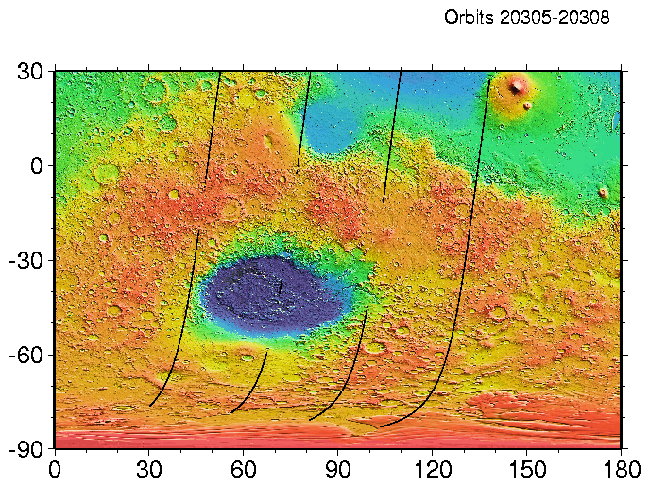
Location map for profiles below. The circular feature is the Hellas impact basin. (Image credit: MOLA Science Team)
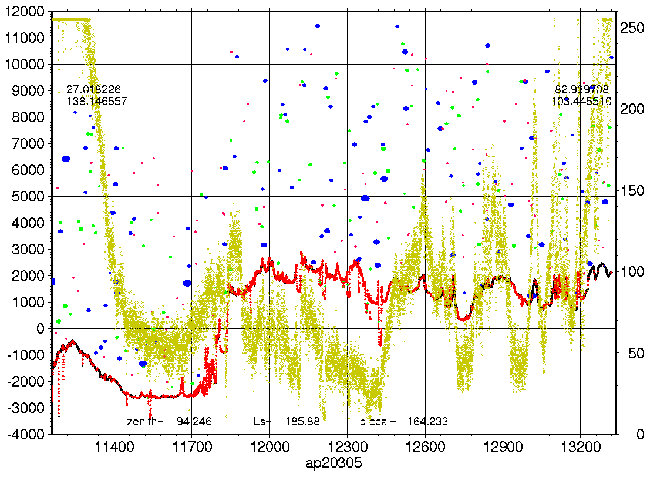
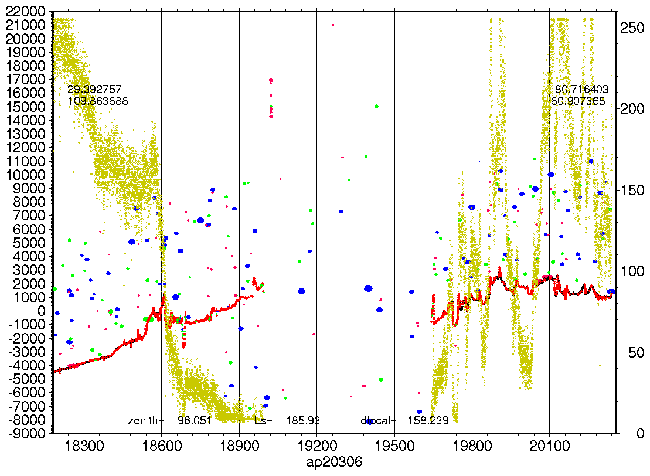
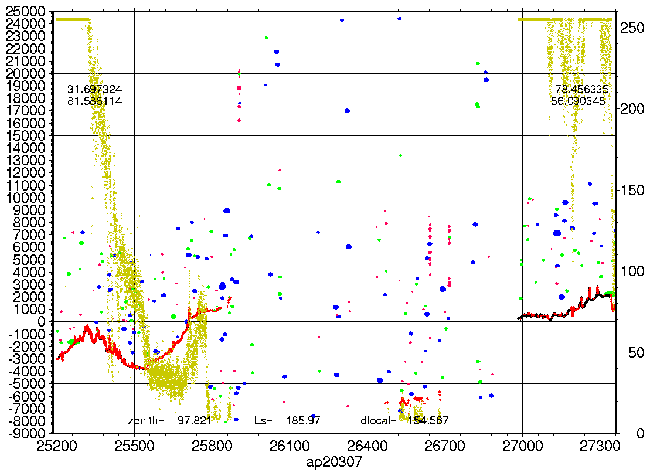
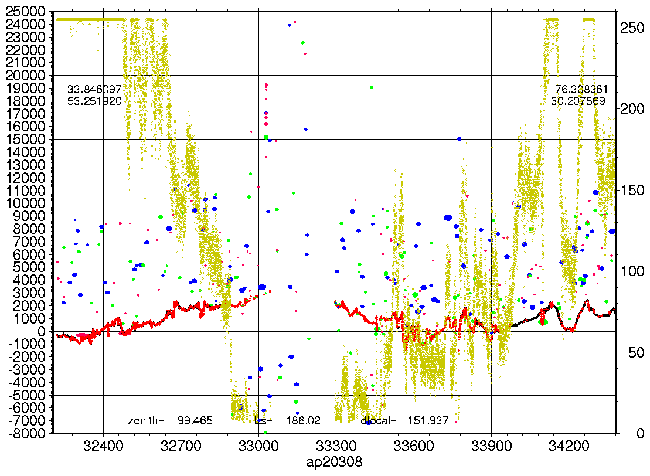
MOLA profiles during the current dust storm. Black, red, green and blue points correspond to range returns from different MOLA filter channels (black= channel 1; red= channel 2; green= channel 3; blue= channel 4). Channels 1 and 2 represent relatively narrow returned laser pulses and green and blue are wide returned laser pulses. The many channel 3 and 4 returns from the atmosphere indicate that MOLA pulses are being spread due to diffuse dust clouds. Regions where no ground measurements are made indicate that the outgoing laser signal has been spread so much by the dusty atmosphere that the number of photons returned to the instrument are insufficient to exceed the detection threshold.
The yellow points correspond to MOLA's returned pulse energy. The energy is lowest at locations where the most outgoing pulse energy interacts with atmospheric dust.
Analysis of these observations will provide information on the opacity of the Martian atmosphere amd the vertical distribution of dust in the Martian atmosphere during dust storms. (Image credit: MOLA Science Team)
